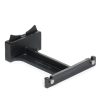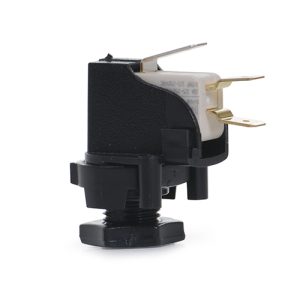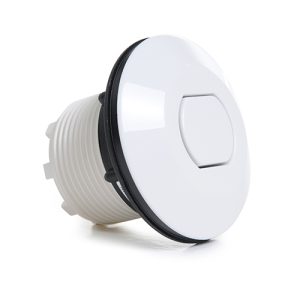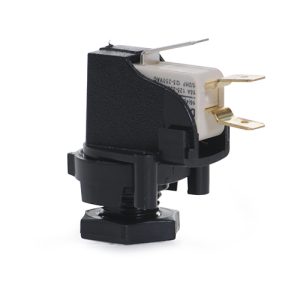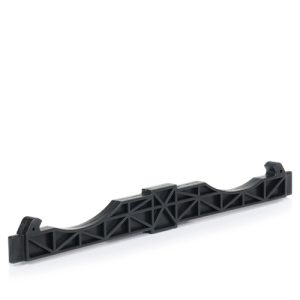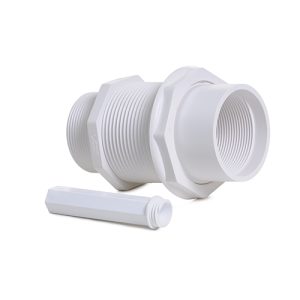Aquamite / Supastream Pump Foot
£21.07 Inc VAT
Out of stock
Want to be notified when this product is back in stock?
Aquamite / Supastream Pump Foot
Stable Mounting Base for Secure Pump Installation
As a retailer of pool and spa parts, I stock this replacement pump foot for Aquamite and Supastream pumps. This mounting component provides a stable base that elevates the pump off the ground, protects the motor from moisture, and ensures secure positioning during operation.
What is a Pump Foot?
The pump foot is a molded plastic or composite base that attaches to the bottom of the pump motor. It typically features multiple mounting points or holes that allow you to bolt the pump securely to a concrete pad, wooden platform, or equipment base. The foot elevates the pump slightly, creating clearance between the motor and the mounting surface.
This component may also incorporate features for mounting vibration-dampening pads or inserts that reduce noise transmission to the equipment pad. Some designs include drainage channels or slots that prevent water accumulation around the motor base.
Functions of the Pump Foot
The primary function is providing stable, secure mounting. A properly installed pump foot keeps the pump stationary during operation, preventing movement or “walking” caused by motor vibration. This stability is essential for maintaining proper plumbing alignment and preventing stress on pipe connections.
The foot elevates the motor housing above the mounting surface, protecting it from standing water. Even small amounts of water sitting on an equipment pad can wick into motor ventilation openings, potentially causing corrosion or electrical problems. The elevation provided by the pump foot creates a protective air gap.
The mounting points on the pump foot distribute the pump’s weight across multiple anchor points, reducing stress on any single connection. This prevents the pump from tipping or shifting, which could damage plumbing connections or internal components.
Additionally, the pump foot provides proper positioning for the pump inlet and outlet, ensuring they align correctly with the plumbing system. This alignment reduces stress on unions and fittings, preventing leaks and extending equipment life.
Signs Your Pump Foot Needs Replacement
Visible cracks or breaks in the foot structure indicate replacement is needed. These can develop from impact damage, over-tightening mounting bolts, or degradation from chemical exposure and UV sunlight. Even hairline cracks compromise structural integrity and can lead to sudden failure.
If the pump rocks or shifts during operation despite being bolted down, the mounting feet may be damaged or worn. This instability creates vibration, noise, and stress on plumbing connections.
Stripped or damaged mounting holes prevent secure attachment. If bolts won’t tighten properly or pull through the foot material, the pump cannot be mounted safely. Attempting to operate a pump with compromised mounting risks damage to both the pump and plumbing.
Warping or deformation from heat exposure or chemical damage affects how the pump sits on the pad. An uneven base causes the pump to tilt, which can affect bearing life and create uneven wear on internal components.
Common Causes of Pump Foot Damage
Physical impact is a common cause—dropping tools on the pump, hitting the foot while mowing around the equipment pad, or accidental kicks can crack the plastic material. The pump foot sits low to the ground where it’s vulnerable to such impacts.
Over-tightening mounting bolts can crack the foot material, especially around the bolt holes. Plastic and composite materials have specific torque limits, and exceeding them causes stress fractures. Always hand-tighten first, then use moderate wrench pressure—not maximum force.
UV exposure from direct sunlight degrades plastic over time, making it brittle. Pumps installed in full sun without shade or cover age faster than those in protected locations. The plastic becomes chalky and prone to cracking.
Chemical exposure, particularly from chlorine or acid spills during maintenance, can weaken the foot material. While pump feet are made from chemical-resistant plastics, prolonged exposure or concentrated spills accelerate degradation.
Age alone causes material breakdown. After years of temperature cycling, vibration, and environmental exposure, even well-maintained pump feet eventually wear out and require replacement.
Installation Considerations
When installing a new pump foot, ensure the mounting surface is level and solid. An uneven pad causes stress on the foot and can lead to cracking. Use shims under the foot if necessary to achieve level positioning.
Bolt the foot securely but avoid over-tightening. Use washers under bolt heads to distribute pressure and prevent the bolt from pulling through the plastic. If the mounting holes seem loose, slightly larger diameter bolts with appropriate washers can provide a secure connection.
Consider using vibration-dampening hardware or pads beneath the pump foot. Anti-vibration pads absorb pump vibration before it transmits to the mounting surface, reducing noise and protecting the equipment pad from wear.
Ensure adequate clearance around the pump for airflow. The motor cooling vents need unrestricted air circulation to prevent overheating. Don’t position the pump too close to walls or other equipment that would block ventilation.
If the pump foot includes slots or provisions for vibration inserts, ensure these are properly installed before mounting the pump. These inserts significantly reduce operational noise.
Importance of Proper Mounting
A secure, stable mounting base is critical for pump longevity. Vibration and movement accelerate wear on bearings, seals, and other internal components. Pumps that shift or rock during operation experience premature failure.
Proper mounting also protects plumbing connections. If the pump moves relative to rigid piping, stress concentrates at the unions and fittings, causing leaks or cracks. A solidly mounted pump maintains consistent alignment with the plumbing system.
The pump foot’s elevation protects the motor from water damage. Motors have ventilation slots that allow air circulation for cooling. If water enters these openings, it can corrode internal electrical components, leading to motor failure.
Stable mounting reduces noise transmission. A pump that’s firmly anchored to a solid pad with proper vibration dampening operates much more quietly than one that’s loosely mounted or sitting directly on concrete without isolation.
Compatibility
This pump foot is specifically designed for Aquamite and Supastream pump models. The mounting hole pattern, dimensions, and attachment points match these pumps’ motor housings. Using the correct foot ensures proper fit, adequate support, and reliable long-term performance.
These compact pumps are popular in residential applications, making the pump foot a commonly needed replacement part when damage occurs or during complete pump rebuilds.
Product Specifications
| Specification | Details |
|---|---|
| Product Type | Pump Mounting Foot / Base |
| Compatibility | Aquamite and Supastream pumps |
| Function | Provides stable mounting base and motor elevation |
| Material | Engineered plastic or composite |
| Application | Attaches to pump motor for secure installation |
| Mounting | Multiple bolt holes for pad attachment |
| Weight | 0.23 kg |
| Dimensions (L × W × H) | 0.12 m × 0.16 m × 0.09 m |
| Volume | 0.002 cubic meters |
| SKU | 6497240100 |
| Category | Pool & Spa Spares |
Maintenance Tips
Inspect the pump foot during routine equipment checks. Look for cracks, especially around mounting bolt holes where stress concentrates. Early detection allows replacement before complete failure.
Keep the area around the pump foot clean and free from standing water. Remove leaves, debris, and dirt that accumulate around the base. This prevents moisture retention that could affect the motor.
Check mounting bolts periodically to ensure they remain tight. Vibration can gradually loosen bolts over time. Retightening maintains secure positioning and prevents pump movement.
If your pump is exposed to direct sunlight, consider installing a pump cover or shade structure. This protects all plastic components, including the pump foot, from UV degradation that shortens their lifespan.
When replacing other pump components, take the opportunity to inspect the pump foot thoroughly. If you’re already disassembling the pump for other repairs, checking the foot condition costs nothing and can prevent future problems.
This essential mounting component ensures your pump sits securely and operates reliably, protecting your investment while maintaining optimal performance throughout the swimming season.
| Weight | 0.23 Kilograms |
|---|---|
| Length | 0.12 Meters |
| Width | 0.16 Meters |
| Height | 0.09 Meters |
| Volume | 0.002 CubicMeters |
| Supplier | GoldenC |
Related products
Spares
Spares
Spares

